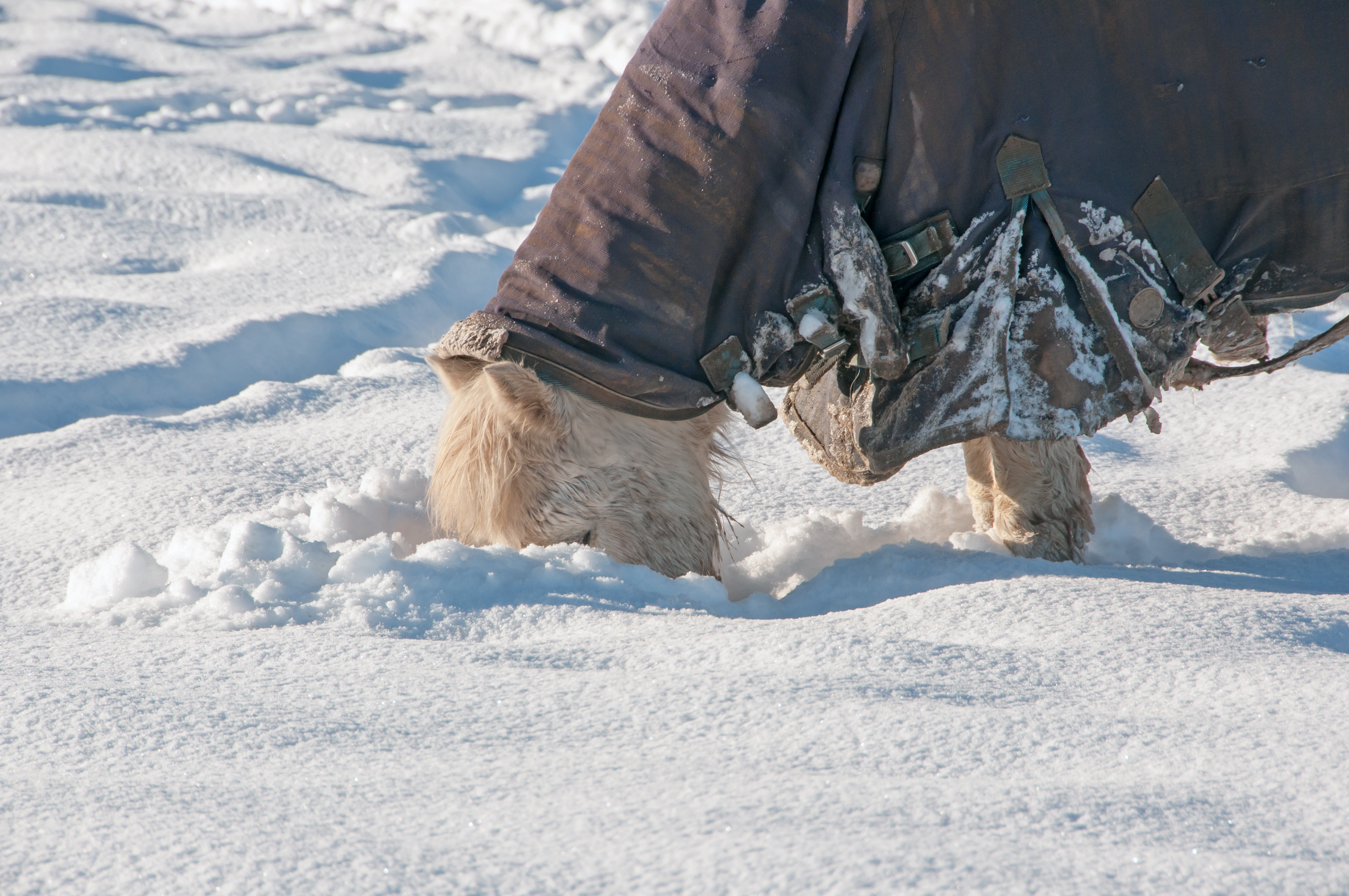German researchers have identified an unseen way that ponies adapt to winter weather.
During the cold season, bears, bats, hedgehogs and some other animals go into hibernation, a slowing of the metabolism—including a decreased heart rate and lower body temperature—that conserves caloric energy.

To see if ponies exhibit similar adaptations, University of Göttingen researchers studied metabolic changes in 10 Shetland ponies on different diets under various climatic conditions. During the winter months, the researchers first fed the ponies a diet that met 100 percent of their maintenance requirements. Then the ponies were divided into two groups. One continued to receive the full ration, while the other group was put on a restrictive diet that met only 60 percent of the ponies energy requirements.
Throughout the study periods, the researchers monitored each pony’s field metabolic rates through blood tests while also measuring vital signs.
Click here for tips on preventing winter weight loss in horses.
The data showed that when the ponies were on a restricted diet during the winter, their metabolic rates were lower and their body temperatures were reduced. These changes, the researchers say, compensated for decreased energy supply at a time when it is usually needed to maintain warmth.
The researchers explain that although the behavior of the ponies didn’t change, the reduction of their metabolic rates and adjustments in body temperature enabled them to minimize the dilution of body energy stores.
Reference: “Saving energy during hard times: Energetic adaptations of Shetland pony mares,” Journal of Experimental Biology, October 2014
This article first appeared in EQUUS issue #449.
Don’t miss out! With the free weekly EQUUS newsletter, you’ll get the latest horse health information delivered right to your in basket! If you’re not already receiving the EQUUS newsletter, click here to sign up. It’s *free*!









